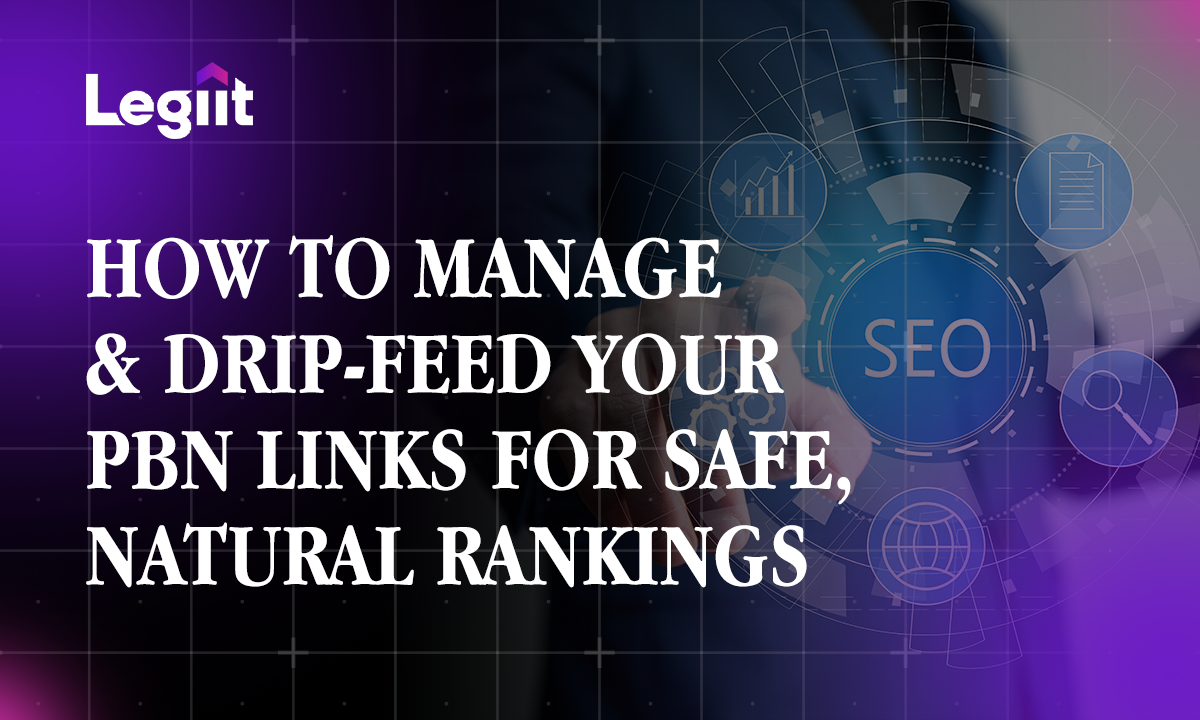As one of the top ranking factors besides content, building links should help websites rank higher on search engine results pages (SERPs).
That said, many people engage in questionable link building techniques that may put their websites at risk. The question now is, are you also using these tactics in your search engine optimization (SEO) strategy? And if so, is there a way to get out of it before it's too late?
In this post, we'll discuss link spamming, its different types, the consequences of implementing them in your link building campaigns, and ways to find and avoid them for your site.
What Is Link Spamming?
Spam linking, also known as link manipulation or spamdexing, is a black hat SEO tactic that involves acquiring links on low-quality websites using automated link building software. Regarding "how to create spam link," the tool searches for websites that can quickly drop dofollow links to your site, like online directories, blogs with comment sections, and others.
These links also disregard the context of the content linking to your website, which renders the link irrelevant and useless to site visitors.
What Are the Effects of Link Spam?
A spam link is created through unethical practices that exploit loopholes in search engine algorithms to achieve a higher ranking for a website.
Nowadays, the algorithms do a much better job detecting websites engaged in link spam. When they identify a site engaging in link spam tactics, search engines may impose penalties. This causes the website to drop its rankings or be completely removed from search engine results.
Google, in particular, constantly updates its algorithm to address challenges that prevent it from showing users the best pages for their search queries.
After all, it's in search engines' best interest to penalize websites engaging in manipulative tactics. By weeding out these sites, users can only see relevant and high-quality pages on SERPs that contain the information they're looking for. This encourages more users to return and search the site in the future, which ties in with the search engine's ability to generate more revenue.
However, link spamming persists to this day but is used differently. Link spammers are tasked by clients to build as many spammy links to competitor sites using automated link building programs and bring their search rankings down. They aim to spam search engine with backlinks pointing to your site so Google will take notice and penalize your website.
Although search engine algorithms can disregard these links from a site's backlink profile, some were still penalized even though they didn't acquire the spammy links. There have been documented cases of negative SEO through the years, showing that link spam can still hurt your website.

Types of Backlink Spamming
Google published a Spam Policies page with a section detailing the different link spams that go against its guidelines.

Google addressed most of the link spam it mentioned. For example, the search engine enabled nofollow links to help blog owners combat comment spam and not send link juice to those sites.
In line with this, Google has improved at addressing link schemes over the years. They can disregard links from forum and directory spam if they don't add value to your site.
There's a lot to unpack regarding web spam, as detailed by Google. But for starters, let's focus on discussing the most common types of link spam that can get your website in hot water with the search engine.
Hidden Text Links
This type of link spam refers to embedding a link within a website's content using font size, color, or other formatting that renders it invisible to the human eye. Ideally, these hidden links allow site owners to increase the backlink quantity while preventing website visitors from detecting them. Sounds like a great plan, right?
Unfortunately, people don't rank websites--search engine algorithms do. And what they do is read the site's code to read and view the site. After spotting the multiple links you injected into the page, they can penalize your website.
Article Marketing Spam
Article marketing for link building was huge back in the day. Just sign up for sites like ezinearticles.com, use content spinning software to generate "unique" content from an existing article online, and publish it with a backlink to your site with little to no resistance from its editorial team. Rinse and repeat the process until many links point to your site pages from these article directories.

This tactic worked so well that most of the pages ranking on Google are from article sites. This is what caused Google to launch its Panda update, which decimated the organic ranking of these websites.
Since the algorithms have smartened up about this practice, Google can easily filter out spam posts with links to your site from article marketing websites. If anything, building links using this method is a complete waste of time.
Poorly Executed Private Blog Networks (PBNs)
PBNs are a network of websites with high SEO metrics created to generate backlinks to boost the target website's search engine rankings. By definition, this falls under black hat SEO because it manipulates Google into thinking that the site you're building links to with your PBNs is acquiring these links naturally.
To be clear, PBNs work. When executed correctly, links from well-structured PBNs with untraceable online footprints can help improve your site's search performance. In this case, you need help from someone with a track record of assisting clients to improve their keyword rankings using PBNs, like Legiit's PBN link builders.
Nonetheless, Google won't hesitate to ban your site from SERPs if you get caught with PBN link building.
Site-Wide Links
They appear on every website page, typically in the footer or sidebar sections. While these site links may appear legitimate, they can be considered spammy, especially if they are irrelevant to the site's niche or topic.
This link spamming technique is another casualty of the Google Panda update. These links don't have value and won't help your website rank higher.
Link Exchanges
This link building scheme involves two or more websites agreeing to link to each other's content to improve their organic search rankings. These site owners usually meet in a link farming community where people seek out link building partnerships like this.
While this practice may seem like a fair exchange, it can quickly become spammy if the goal is solely to build backlinks without offering value to the website's users or if the exchange involves low-quality sites.
Also, search engines can easily detect link exchanges. For example, if both sites link and get links from the same page on their websites, Google can devalue or ignore them from their respective link profiles.
The same goes for link wheel, another link building tactic from before with a very predictable link structure that borrows heavily from link exchanges.

These are examples of transparent manipulation that the search engine can't tolerate.
That said, link exchange can work if the sites link to different pages from various websites. By making the structure as unpredictable and random as possible, you can make Google think they're natural. Similar to PBNs, this technique can work if done correctly.
Link Bait and Switch
This deceptive tactic happens when a site owner initially publishes high-quality content to gain backlinks, then later replaces it with low-quality or irrelevant content.
For instance, a site optimizes a page around an upcoming holiday or event. It advertises free tickets or resources about the topic to attract links. After getting the links, the website quickly changes the page content to an unrelated commercial topic, hoping search engine bots haven't crawled it yet.
This puts the credibility and relevance of the backlinks in question, misleading both visitors and search engines. Fortunately, Google can detect these tactics and penalize sites engaging in them.
How Do I Find Spammy Links?
If you mistakenly built any of the links above to your site through the years, finding these spammy links is much easier nowadays.
The process below also applies to people whose sites lost their high keyword positions without changing anything in their SEO process. There's a good chance that competitors launched a negative SEO campaign against your site.
To start, use a tool like Semrush and analyze your backlink profile. Enter your site's URL on the search bar and click on Link Building > Backlink Analytics to see data about its link profile. Then, go to Referring Domains to see the domains linking to your site and the number of pages that link to you.
It also shows the domain's Authority Score (AS), which computes the site's overall quality based on different factors. The higher the score (on a scale of 0-100, 100 being the highest), the less spammy it is.

However, just because the domains have low Authority Scores doesn't automatically mean the links you get from them are spammy. It's best to open the site and see for yourself--it's possible that the site is just brand new.
To help you better determine which links are damaging your site's SEO, Semrush's Backlink Audit analyzes a site's link profile and identifies its Toxicity Score. The higher the score, the more toxic your profile is.
If your site doesn't have enough referring domains, Semrush won't be able to show its Toxicity Score. However, you can see the percentage of toxic, potentially toxic, and non-toxic domains.

It also provides you with insights concerning your link profile. Use this information to guide your upcoming link building campaign so you can maximize the effects of the inbound links on your site.
How to Avoid Link Spam?
To keep your website secure and maintain its rankings, follow these guidelines to avoid the pitfalls of link spamming.
Practice White Hat Link Building
Focus on building a healthy backlink profile by acquiring quality links that come naturally from relevant and authoritative sources.
You must follow ethical link-building practices, such as building relationships with high-quality websites and earning organic, relevant backlinks. If you don't have time to do these, hire link building services that can get the job done. Acquiring even a handful of good-quality backlinks is better than accumulating hundreds of poor-quality ones.
Finally, disregard tactics that build links from spam pages.
Publish High-Quality Content
Ensure your website content is engaging and relevant to your audience. This increases the chances of gaining natural backlinks from other reputable websites in your specific niche. Focus on creating evergreen content that offers value to the users even after a long time has passed.
Monitor Your Website's Backlinks Regularly
Use Semrush to track your site's new backlinks and see the domains' Authority Scores. You can also tag spammy links based on the tool's Toxicity Score for future reference. Ask the site owner to remove the link from their site if possible.
Corollary, take care of your best backlinks and avoid losing them. If you do, contact the site owner and ask them to link back to your site again.
How to Recover From Link Spam Penalties
As mentioned, link spamming may cause Google and others to hit you with an algorithmic penalty and never show your site pages on SERPs indefinitely. While this is terrible news for your site, this is a way to recover your website from the penalty and get your website ranking again by disavowing low-quality links.
It refers to identifying which pages or domains you want Google to ignore from your link profile. You can recover your search rankings and organic traffic over time if done right.
Going back to Semrush, audit your link profile to identify toxic backlinks pointing to your website. While Google's algorithm is smart enough to ignore most of them, you may need to take matters into your own hands if you're experiencing massive drops in your keyword rankings on SERPs due to these links.
In this case, click on the cancel icon of each domain to add it to your disavow list. Identify as many as you need.

Once you have your list, go to Google Search Console and submit the file there.

At some point reading this, you may ask, "Why is spam so difficult to eradicate?" It's because you must wait before search engines apply the changes you requested from your disavow list. This could take weeks and months before you can finally recover your site. Ultimately, the effort should be all worth it, especially if the penalized site is one of your primary income sources.
Remember that disavowing links is a last resort, as they may create irreversible actions on your site's link profile. So, thoroughly check all SEO factors causing your site to drop on search results. Even better, consult an SEO expert on whether you should disavow your toxic links.
Conclusion
Thanks to Google's constantly updating algorithm, spam links are no longer as effective as they once were. However, this doesn't mean you don't have to watch out for them. Spamming is still rampant--a good link spammer can put down your website from search results if it builds even toxic links to your site.
However, this guide should at least provide ways to combat link spam. And by also following ways to avoid building spammy links, you can guarantee the success of your site for years to come.














 Download
Download